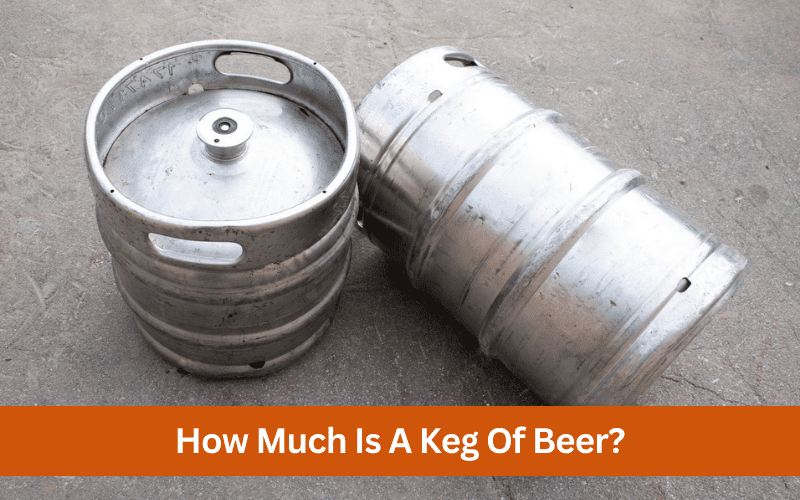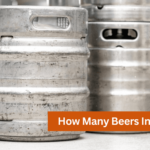Imagine this: you’re planning a party or a get-together with friends and family, and you’re trying to figure out what beverages to serve. Sure, you could buy cans or bottles, but there’s something about a keg that just screams celebration. However, before you commit to a keg, you need to answer one important question: How much is a keg of beer? The cost of a keg can range from $20 to $250, depending on many factors. As someone who’s thrown a fair share of parties and has had to deal with the keg dilemma, I can tell you that the answer isn’t always straightforward. There are different types of kegs, brands, and sizes, each with their own price tag. In this article, we’ll dive into the world of kegs and explore how much is a keg of beer you can expect to pay for one, along with other important details you need to know before making a purchase.
What Is a Keg of Beer?
According to Wikipedia, a keg of beer is a container that is primarily made of stainless steel, although it can also be made of aluminum in some cases. The keg has a single opening on one end, known as a “bung,” which is used for filling and dispensing the beer. The bung is sealed with a plug during transportation to prevent any leaks or contamination. Kegs come in different sizes and are commonly used in bars, pubs, and at events where large quantities of beer are required.
History of Kegs
The history of kegs can be traced back to the origins of beer itself, with evidence dating back to the ancient Egyptians and Mesopotamians in the 5th millennium BCE. These civilizations discovered the fermentation process for wild grains and produced beer in large quantities. To store and consume this liquid bread, they used terracotta vats and bowls. Artwork from this era even depicts brewers straining mash through cloths and into ceramic vessels.
While kegs as we know them today didn’t exist yet, the ancient practice of storing and transporting beer in containers laid the foundation for the development of modern kegs. Over time, the keg has evolved into a more durable and convenient vessel, with the bung opening making it easier to dispense beer.
How Do Beer Kegs Work?
A beer keg is a container used to store and dispense beer. It is typically made of stainless steel or aluminum and can range in size from a few liters to many gallons. Here’s how they work:
- Filling: The keg is filled with beer at a brewery or other beer supplier. The beer is pumped into the keg through a valve located on the top or side of the keg.
- Pressurization: After the keg is filled, it is pressurized with carbon dioxide (CO2) gas to a specific pressure level. The CO2 helps to keep the beer carbonated and prevents the beer from oxidizing or spoiling.
- Dispensing: When it’s time to dispense the beer, a tap is attached to the valve on the top or side of the keg. The tap is connected to a hose that runs from the keg to the faucet. When the tap is opened, the beer flows out of the keg and through the hose, and then out of the faucet and into a glass.
- Temperature control: Temperature control is also important for maintaining the quality of the beer. Kegs are often kept in refrigerators or coolers to keep the beer at a consistent temperature.
- Cleaning: Kegs need to be regularly cleaned to prevent bacteria and other contaminants from growing inside. Cleaning typically involves flushing the keg with a cleaning solution and then rinsing it thoroughly with water.
Overall, beer kegs work by keeping the beer pressurized and at a consistent temperature until it is ready to be dispensed through a tap and faucet system.
How Tall Is a Beer Keg?
How tall a beer keg is can depend on the size of the keg, as different sizes are available in the market. Common sizes include half-barrel kegs, which are typically around 23 inches tall, and quarter-barrel kegs, which are around 13-14 inches tall. As for how much does a keg weigh, this can also vary depending on the size and the amount of beer inside. For example, a full half-barrel keg typically weighs around 160 pounds, while a full quarter-barrel keg weighs around 90 pounds.
Why Should You Buy A Keg?
There are several reasons why someone might choose to buy a keg of beer:
- Cost-effective: If you’re hosting a large party or event, buying a keg can be more cost-effective than buying individual bottles or cans of beer.
- Convenience: With a keg, you don’t need to worry about stocking a large number of individual containers or cleaning up after a lot of empty bottles or cans. Plus, kegs can be easier to transport and store than large numbers of individual containers.
- Freshness: Kegs can help ensure that your beer stays fresh for longer periods of time, as they are pressurized and sealed to prevent oxidation and spoilage.
- Variety: Some breweries and distributors offer a wider variety of beers in kegs than they do in bottles or cans. This can be a great way to try out new or limited edition beers.
- Environmental impact: Kegs can be more environmentally friendly than individual bottles or cans, as they are reusable and generate less waste.
Overall, buying a keg can be a good option for those hosting large events or looking for a cost-effective, convenient, and environmentally friendly way to enjoy their favorite beers.
Different Types of Kegs
Before knowing how much does a keg of beer cost, it’s necessary to understand different types of kegs. Kegs are an essential vessel for storing and serving beer, and come in a variety of sizes and shapes to fit different needs. Here are some of the most common types of kegs:
- Quarter barrel keg (Pony keg): This type of keg is also known as a pony keg and is the smallest standard keg size. It contains 7.75 gallons of beer and is perfect for smaller gatherings or events.
- Half barrel keg: A half barrel keg is equivalent to a full-size keg and contains 15.5 gallons of beer. This is the most common keg size used in commercial settings like bars and restaurants.
- Sixth barrel keg: The sixth barrel keg contains 5.16 gallons of beer and is commonly used by homebrewers. These kegs are smaller and more manageable than full-size kegs, making them ideal for smaller batches of beer.
- Cornelius keg: This type of keg is similar to a sixth barrel keg, but is slightly taller and thinner. It holds 5 gallons of beer and is commonly used by homebrewers and in draft systems for home use.
- Mini keg: The smallest type of keg, a mini keg typically holds 1.32 gallons of beer and is ideal for personal use or small gatherings. These kegs often come with a built-in tap for easy dispensing.
Each type of keg has its own unique features and benefits, so it’s important to choose the right keg for your specific needs.
How Much Does a Keg Cost?
If you’re considering purchasing a keg of beer for an event or party, one of the first questions you may have is: how much is a keg of beer? The average cost of kegs can range from $20 – $250 or more.
The answer of how much is a keg can vary depending on the size of the keg and the type of beer, but here is a breakdown of some common keg sizes and their prices:
How much is a full size keg of beer?
Do you know how much is a half keg of beer? A full-size keg, also known as a half-barrel keg, contains 15.5 gallons of beer and is the most common size used in commercial settings. The cost of a full-size keg can vary widely, depending on the brand and type of beer, but typically ranges from $100 to $200 or more.
Quarter barrel keg (Pony keg)
How much is a quarter keg of beer? A quarter barrel keg, also known as a pony keg, contains 7.75 gallons of beer and is a popular choice for smaller parties and gatherings. So, how much is a pony keg? The cost of a pony keg ranges from $60 to $100, depending on the brand and type of beer.
Sixth barrel keg
How much does a keg cost which is sixth barrel? A sixth barrel keg, also known as a sixtel, contains 5.16 gallons of beer and is a good option for those who want a smaller quantity of beer. The cost of a sixtel varies depending on the brand and type of beer, but typically ranges from $60 to $150 or more.
Cornelius keg
A Cornelius keg, also known as a corny keg, is a smaller keg that holds 5 gallons of beer. These kegs are popular among homebrewers and can be a cost-effective option for those who want to serve their own beer. The cost of a Cornelius keg ranges from $50 to $100.
Mini keg
How much is a keg of beer cost which type is mini? A mini keg, also known as a Bubba keg, holds around 1.32 gallons of beer and is a convenient option for those who want to serve beer at home without committing to a larger keg. The cost of a mini keg varies depending on the brand and type of beer, but typically ranges from $20 to $40.
In conclusion, how much is a keg of beer can vary depending on the size and type of keg, as well as the brand and type of beer. It’s important to consider these factors when deciding which keg to purchase for your event or gathering.
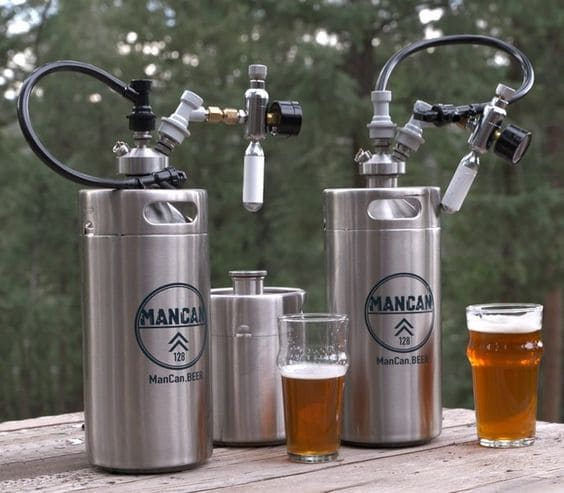
How Much Is a Keg of Beer in Different Brands
| Beer Brand | Keg Size | Estimated Price Range |
| How much is a keg of Bud Light? | Quarter BarrelHalf Barrel | $80-$140$150-$220 |
| How much is a keg of Coors Light? | Quarter Barrel Half Barrel | $80-$140 $150-$220 |
| How much is a keg of Miller Lite? | Quarter Barrel Half Barrel | $80-$140 $150-$220 |
| How much is a keg of Michelob Ultra? | Quarter Barrel Half Barrel | $90-$160 $170-$250 |
| How much is a keg of Busch Light? | Quarter Barrel Half Barrel | $70-$130 $130-$200 |
| How much is a keg of Budweiser? | Quarter Barrel Half Barrel | $80-$140 $150-$220 |
| How much is a keg of Modelo? | Quarter Barrel Half Barrel | $120-$180 $220-$300 |
| How much is a keg of Guinness? | Quarter Barrel Half Barrel | $170-$240 $250-$320 |
| How much is a keg of Heineken? | Quarter Barrel Half Barrel | $140-$200 $260-$320 |
| How much is a keg of Blue Moon? | Quarter Barrel Half Barrel | $140-$200 $260-$320 |
| How much is a keg of Natural Light? | Quarter Barrel Half Barrel | $50-$100 $100-$160 |
Factors Affecting How much Is a Keg of Beer
When it comes to buying a keg of beer, there are several factors that can affect the price you pay. Here are some of the most common factors that can impact how much is a keg of beer:
- Type of beer: Different types of beer have different production costs, which can impact the price of a keg. For example, a keg of craft beer may cost more than a keg of mass-produced domestic beer.
- Size of keg: The size of the keg is one of the most important factors that affect the price. Smaller kegs, like quarter barrels or corny kegs, cost less than larger kegs like full-size or half-barrel kegs.
- Brand of beer: Just like with any other product, different brands of beer can have different prices. Popular, well-known brands may cost more than lesser-known brands.
- Local taxes and fees: Local taxes and fees can add to the cost of a keg. These fees can vary depending on the location where you’re purchasing the keg.
- Shipping and handling Fees: If you’re purchasing a keg from a retailer or distributor that is not local to you, shipping and handling fees can add to the cost of the keg.
- Deposit fee: Many places require a deposit fee when you purchase a keg. This fee is typically refunded when the keg is returned, but it can add to the upfront cost of the keg.
Understanding these factors affect how much does a keg of beer cost can help you make an informed decision when purchasing a keg of beer. Keep in mind that prices can vary depending on the brand of beer, local taxes and fees, shipping and handling fees, and deposit fees, so it’s always a good idea to shop around and compare prices before making a purchase.
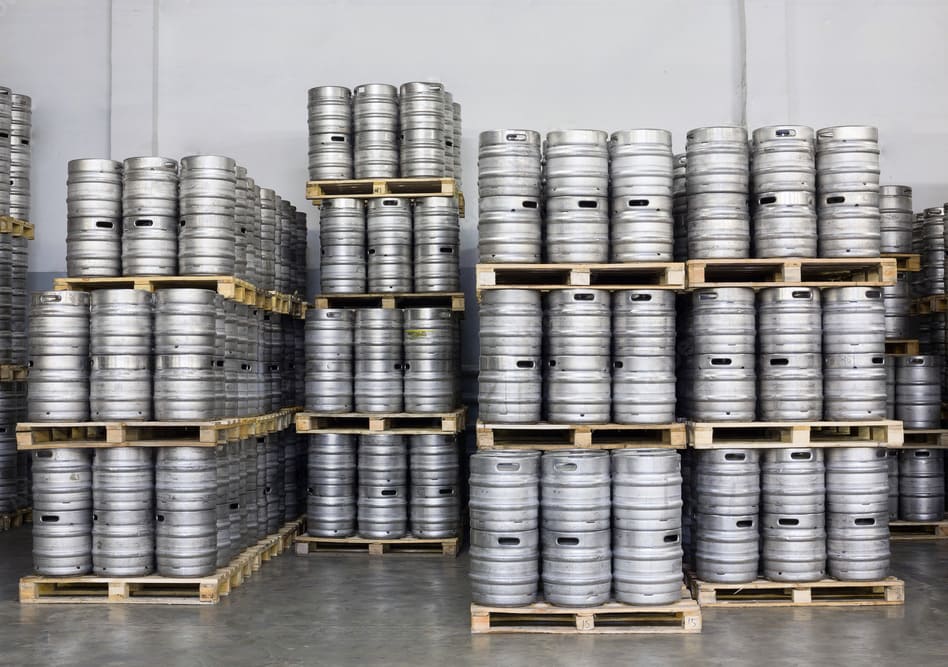
Should I Buy My Own Keg?
Whether or not you should buy your own keg depends on your personal preferences and circumstances. Here are some factors to consider:
- How often do you drink beer? If you only have a beer occasionally, it may not be worth it to invest in a keg, as the beer could go stale before you finish it.
- How much do you enjoy beer on tap? If you really enjoy the taste of beer on tap, owning your own keg could be a great investment.
- Do you have the space to store a keg? Kegs are large and require space for storage, as well as a refrigerator or other cooling unit to keep the beer at the right temperature.
- How much money are you willing to spend? Buying a keg and the necessary equipment can be expensive upfront, but could save you money in the long run if you frequently host parties or events.
Overall, if you are a big beer drinker, enjoy the taste of beer on tap, have space to store a keg, and are willing to invest in the equipment, buying your own keg could be a good choice for you.
Can I Rent a Keg?
Yes, it is possible to rent a keg from various places such as liquor stores, breweries, and event rental companies. Renting a keg can be a good option if you are hosting a party or event and do not want to invest in the equipment or do not have the storage space for a keg.
How to Rent or Buy a Keg
If you’re planning a party or event and want to serve beer, renting or buying a keg can be a cost-effective and convenient option. Here are some things to keep in mind when renting or buying a keg:
Where to buy or rent a keg
- Beverage distributors: Many beverage distributors offer kegs for sale or rent. Check with local distributors in your area for availability and pricing.
- Liquor stores: Some liquor stores also offer kegs for rent or sale.
- Breweries: Local breweries may offer kegs for sale or rent. This can be a great option if you’re looking for a specific type or brand of beer.
Requirements for renting a keg
- Age: In most cases, you must be 21 years of age or older to rent a keg.
- ID: You will likely need to provide a valid form of ID when renting a keg.
- Deposit: Many places require a deposit when renting a keg. This is typically refunded when the keg is returned.
- Keg tap: You will need a keg tap to dispense the beer. Many places will rent or sell a tap along with the keg.
What to expect when renting or buying a keg
- Price: The cost of a keg can vary depending on the size, brand, and type of beer.
- Deposit: As mentioned, many places require a deposit when renting a keg. This is typically refunded when the keg is returned.
- Pickup/delivery: You will need to arrange for pickup or delivery of the keg.
- Storage: Kegs need to be stored in a cool place, such as a refrigerator or kegerator.
- Dispensing: You will need a keg tap to dispense the beer. Many places will rent or sell a tap along with the keg.
By following these guidelines, you can successfully rent or buy a keg for your next party or event. Just be sure to plan ahead and shop around to find the best price and availability.
Is Renting Cheaper than Buying a Keg?
Renting a keg is typically cheaper than buying a keg if you only need it for a one-time event, as you will not have to invest in the equipment or worry about storing the keg after the event. However, if you plan to use the keg frequently, buying a keg and the necessary equipment may be more cost-effective in the long run.
Is a Kegerator needed for a Keg of Beer?
A kegerator is not absolutely necessary for a keg of beer, but it is highly recommended. A kegerator is a specialized refrigerator designed to keep a keg of beer at the correct temperature and pressure, which is essential for preserving the quality and taste of the beer.
Without a kegerator, you would need to find an alternative way to keep the keg cool and regulate the pressure, such as using a jockey box or a portable CO2 tank. However, these methods can be more complicated and may not be as effective as a kegerator. If you plan to regularly serve beer from a keg, investing in a kegerator is a good idea.
Cost Comparison: Keg vs. Cans/Bottles
You have known how much does a keg cost, it’s time to compare keg and can/bottle of beer to have a better choice. When it comes to buying beer for a party or event, you may be wondering whether it’s more cost-effective to buy a keg or cans/bottles. Here’s a comparison of the costs and benefits of each option:
Price comparison between buying cans/bottles and kegs
- Keg: The cost of a keg can vary depending on the brand, size, and location of purchase. On average, a keg of beer costs around $100-$200 or more. This can provide around 165 12-ounce servings of beer.
- Cans/Bottles: The cost of cans or bottles of beer varies depending on the brand and quantity purchased. On average, a 12-pack of beer can cost around $10-$20, providing 12 servings of beer.
Benefits and drawbacks of buying cans/bottles vs. kegs
- Keg: Buying a keg can be more cost-effective if you’re serving a large number of people. Additionally, kegs can be more environmentally friendly since they produce less waste than cans or bottles. However, kegs require additional equipment, such as a keg tap and refrigeration, and can be more difficult to transport and store.
- Cans/Bottles: Buying cans or bottles can be more convenient since they require no additional equipment and can be stored and transported easily. However, cans and bottles can produce more waste and may be more expensive if you’re serving a large number of people.
Is it cheaper to buy kegs or bottles/cans?
The answer to this question depends on several factors, including the number of people you’re serving, the type of beer you want, and your location. In general, if you’re serving a large number of people, a keg can be more cost-effective. However, if you’re only serving a few people, cans or bottles may be more cost-effective. It’s important to shop around and compare prices before making a decision.
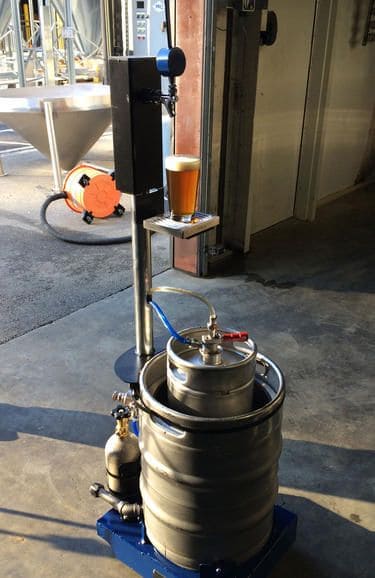
Tips for Saving Money When Buying a Keg
Buying a keg can be a cost-effective way to serve beer at a party or event. Here are some tips for saving money when buying a keg:
- Comparison shopping: Before making a purchase, shop around to compare prices and availability from different retailers. Prices can vary depending on the brand, size, and location of purchase.
- Timing of purchase: Some retailers may offer discounts or special deals during certain times of the year or during holidays. Consider purchasing a keg during a sale or promotion to save money.
- Buying in bulk: If you’re hosting multiple events, consider buying multiple kegs at once to receive a bulk discount. You may also be able to negotiate a discount if you’re purchasing a large quantity of kegs.
- Refilling used kegs: If you already have a keg, you may be able to refill it rather than purchasing a new one. Many retailers offer keg refilling services at a lower cost than purchasing a new keg.
- Return policy: Before making a purchase, check the retailer’s return policy. Some places may offer a refund on the keg deposit fee, while others may not. Additionally, make sure you’re aware of any fees or penalties for returning a keg late or damaged.
By following these tips, you can save money when buying a keg and enjoy your event without breaking the bank.
How Much Beer Is in a Keg?
If you’re wondering how many beers are in a keg, it depends on the size of the keg. Here’s a breakdown of the most common keg sizes and how many beers they contain:
- 1/2 barrel = 15.5 gallons = 124 pints = 165 12oz bottles – (Full Size Keg)
- 1/4 barrel = 7.75 gallons = 62 pints = 83 12oz bottles (Pony Keg)
- 1/6 barrel (20 Ltr) = 5.2 gallons = 41 pints = 55 12oz bottles (Sixtel)
- 50 Liter = 13.2 gallons = 105 pints = 140 12oz bottles
- 30 liter = 8.1 gallons = 64 pints = 86 12oz bottles
So, how many beers are in a quarter keg? A quarter keg, also known as a pony keg, contains 7.75 gallons of beer. This is equivalent to 62 pints or 83 12oz bottles of beer.
It’s important to note that these estimates are based on a standard serving size of 12 ounces. If you plan to serve larger or smaller portions, the number of servings per keg will vary. Additionally, factors such as foam and spillage can also impact the number of servings you get from a keg.
How Many Beers to Get Drunk?
The number of beers it takes to get drunk varies depending on a variety of factors, including body weight, gender, and tolerance. It’s important to drink responsibly and know your limits to avoid potential harm.
Storing a Keg
If you’ve purchased a keg of beer, it’s important to store it properly to ensure the beer stays fresh and doesn’t go bad. Here’s what you need to know about storing a keg:
Does keg beer go bad?
Yes, keg beer can go bad if it’s not stored properly or if it’s kept for too long. Oxygen and heat are two factors that can affect the quality of the beer and cause it to spoil.
Temperature requirements
The ideal temperature for storing a keg of beer is between 34-38 degrees Fahrenheit. This is the same temperature range as a typical refrigerator. The beer should be kept consistently cold to prevent spoilage and maintain freshness.
Tips for storing a keg properly
- Keep the keg cold: As mentioned, the keg should be stored at a consistent temperature between 34-38 degrees Fahrenheit. This can be achieved by storing the keg in a refrigerator or a kegerator.
- Keep the keg upright: The keg should always be kept upright to prevent the sediment from settling at the bottom and affecting the quality of the beer.
- Avoid shaking or jostling the keg: Agitating the keg can cause the sediment to mix with the beer and affect the taste.
- Check the expiration date: Kegs of beer have an expiration date, so be sure to check it before purchasing and storing the keg.
- Clean the dispensing system: If you’re using a kegerator or other dispensing system, be sure to clean it regularly to prevent bacteria growth and maintain the quality of the beer.
How Long Does a Keg Last?
If you’re wondering how long a keg of beer lasts, the answer depends on a variety of factors. Here’s what you need to know:
How long is a keg of beer good for?
The shelf life of a keg of beer varies depending on the type of beer and how it’s stored. In general, most beers are best consumed within 90 days of being kegged. However, some beers, such as stouts and porters, can last up to 120 days or longer. Lighter beers, such as lagers and pilsners, tend to have a shorter shelf life and should be consumed within 60 days of being kegged.
Factors affecting the shelf life of a keg
- Type of beer: Different types of beer have different shelf lives. As mentioned, stouts and porters tend to last longer than lighter beers like lagers and pilsners.
- Storage temperature: The temperature at which the keg is stored can affect the shelf life of the beer. Beer should be stored between 34-38 degrees Fahrenheit to maintain freshness and quality.
- Exposure to light: Exposure to light can cause the beer to spoil more quickly, so kegs should be stored in a dark place or covered with a light-blocking material.
- Oxygen exposure: Exposure to oxygen can cause the beer to become stale and spoil more quickly. To prevent this, the keg should be kept pressurized and the dispensing system should be properly sealed.
How to Tap a Keg
Steps for tapping a keg
Tapping a keg may seem intimidating at first, but with the right tools and knowledge, it’s a straightforward process. Here are the steps to follow:
- Chill the keg: Before tapping the keg, make sure it’s properly chilled to the recommended temperature. A keg should be stored between 34-38 degrees Fahrenheit to maintain freshness.
- Set up the dispensing system: Connect the dispensing system to the keg using a coupler. Be sure to select the appropriate coupler based on the type of keg you have. If you’re using a hand pump or CO2 system, connect it to the coupler as well.
- Purge the air: Before tapping the keg, it’s important to purge the air from the system to prevent oxidation and maintain freshness. To do this, pull the pressure relief valve on the coupler for a few seconds until you hear a hissing sound.
- Tap the keg: Place the coupler onto the keg valve and turn it clockwise to lock it into place. Then, push down the handle to tap the keg. You should hear a click when the keg is tapped.
- Adjust the pressure: If you’re using a CO2 system, adjust the pressure to the recommended level for your beer. This information can typically be found on the beer label or online. If you’re using a hand pump, pump it a few times until the beer starts flowing.
- Pour the beer: Once the keg is tapped and the pressure is adjusted, you’re ready to pour the beer. Tilt the glass at a 45-degree angle and slowly pour the beer, being careful not to create too much foam. Gradually straighten the glass as you pour and adjust the flow rate as needed.
Tips for tapping a keg properly
- Use the appropriate coupler: Make sure you have the right coupler for your keg type to ensure a proper seal and prevent leaks.
- Purge the air: Always purge the air from the system before tapping the keg to maintain freshness.
- Chill the keg: Keep the keg properly chilled to ensure the beer stays fresh and flavorful.
- Adjust the pressure: If you’re using a CO2 system, make sure the pressure is adjusted to the recommended level for your beer to prevent over-carbonation or under-carbonation.
- Pour properly: Tilt the glass and pour slowly to prevent excessive foaming and ensure a good pour.
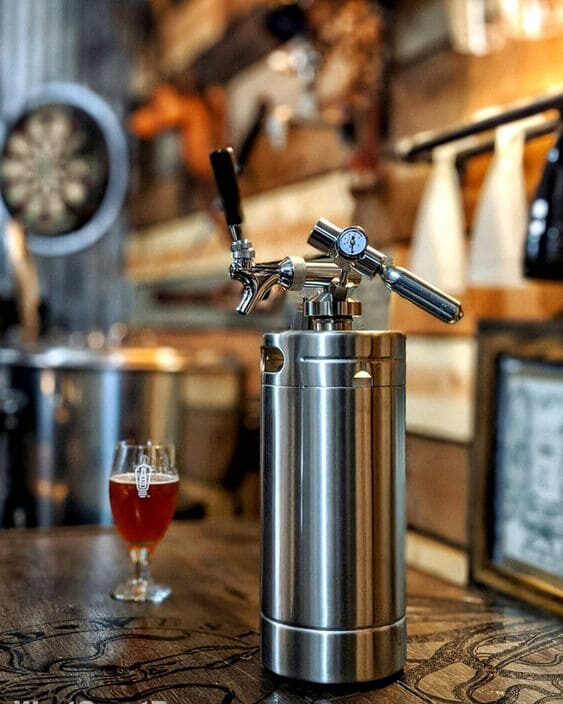
The Pros and Cons of Kegs
Kegs are a popular way to serve beer for events, parties, and gatherings. Here are the pros and cons of using kegs:
Is keg beer healthy?
In moderation, beer can be part of a healthy lifestyle. Keg beer is no exception, as it’s made with the same ingredients and brewing methods as other types of beer. However, it’s important to drink responsibly and in moderation to avoid potential health risks.
Benefits of using a keg
- Cost-effective: Kegs can be a cost-effective way to serve beer at a large event or party, as they typically provide more servings per dollar than cans or bottles.
- Environmentally friendly: Kegs are reusable and generate less waste than cans or bottles, making them a more eco-friendly option.
- Freshness: Keg beer is typically fresher than canned or bottled beer, as it’s not exposed to air or light during the dispensing process.
- Convenience: With a keg, there’s no need to worry about storing, opening, or disposing of cans or bottles.
Drawbacks of using a keg
- Upfront cost: While kegs can be cost-effective in the long run, the upfront cost of purchasing or renting a keg and dispensing system can be higher than buying cans or bottles.
- Storage and transportation: Kegs are larger and heavier than cans or bottles, which can make them more difficult to store and transport.
- Temperature control: Kegs need to be stored at a consistent temperature between 34-38 degrees Fahrenheit to maintain freshness and quality, which may require special equipment.
- Maintenance: Keg dispensing systems require regular maintenance, including cleaning and adjusting pressure, to ensure proper functionality.
FAQs
Can you return an empty keg for a refund?
Yes, many retailers and distributors offer a refund for the return of an empty keg. The deposit paid when purchasing the keg is typically refunded upon return of the empty keg.
Can you tap a keg without a tap?
No, tapping a keg without a tap is not possible. A tap or dispensing system is required to properly access and pour the beer from the keg.
Do you need to refrigerate a keg before tapping?
Yes, it’s important to properly refrigerate a keg before tapping to ensure the beer stays fresh and maintains its quality. A keg should be stored between 34-38 degrees Fahrenheit for at least a few hours before tapping.
How do you dispose of an empty keg?
Empty kegs can typically be returned to the retailer or distributor where they were purchased for a refund. If not returned, empty kegs can be recycled or disposed of according to local waste management regulations.
How many pints are in a full-size keg?
A full-size keg, also known as a half-barrel keg, contains approximately 124 pints of beer.
Do I need to pay a deposit when buying a keg?
Yes, many retailers and distributors require a deposit when purchasing a keg. This deposit is usually refunded upon the return of the empty keg.
How many glasses of beer are in a keg?
The number of glasses of beer in a keg depends on the size of the keg and the serving size of the glass. For example, a full-size keg contains approximately 165 12oz bottles or cans of beer, which is equivalent to approximately 124 pints or 198 8oz glasses of beer.
Can I buy a keg of my favorite beer brand?
Yes, in most cases you can buy a keg of your favorite beer brand. However, availability may vary depending on your location and the beer brand. Some brands may also have restrictions on keg sales, such as requiring a minimum order or only selling to licensed retailers.
Can I reuse a keg for a different type of beer?
Yes, you can reuse a keg for a different type of beer. However, it is important to thoroughly clean and sanitize the keg between uses to avoid contamination and ensure the quality of the beer. You will also need to replace any parts that are worn or damaged, such as the O-rings, before reusing the keg.
Conclusion
In general, understanding how much is a keg of beer and the various factors that affect the cost and quality of the beer is important for anyone looking to purchase or rent a keg. From the type and brand of beer to the size of the keg, there are many variables to consider. Properly tapping and storing the keg is also crucial for maintaining freshness and quality. While kegs have their benefits and drawbacks compared to other beer serving methods, they remain a popular choice for parties, events, and other gatherings. Whether you’re a beer enthusiast or simply looking to enjoy a cold one with friends, knowing how much does a keg of beer cost can help you make informed decisions and ensure a satisfying experience.
I’m Chen Mina, from Vol de Nuit, who has a special passion for bartending, especially mixing wine, beer, and cooktail. Here you will find content about alcoholic beverages, I will bring you knowledge that few people know about this drink.

